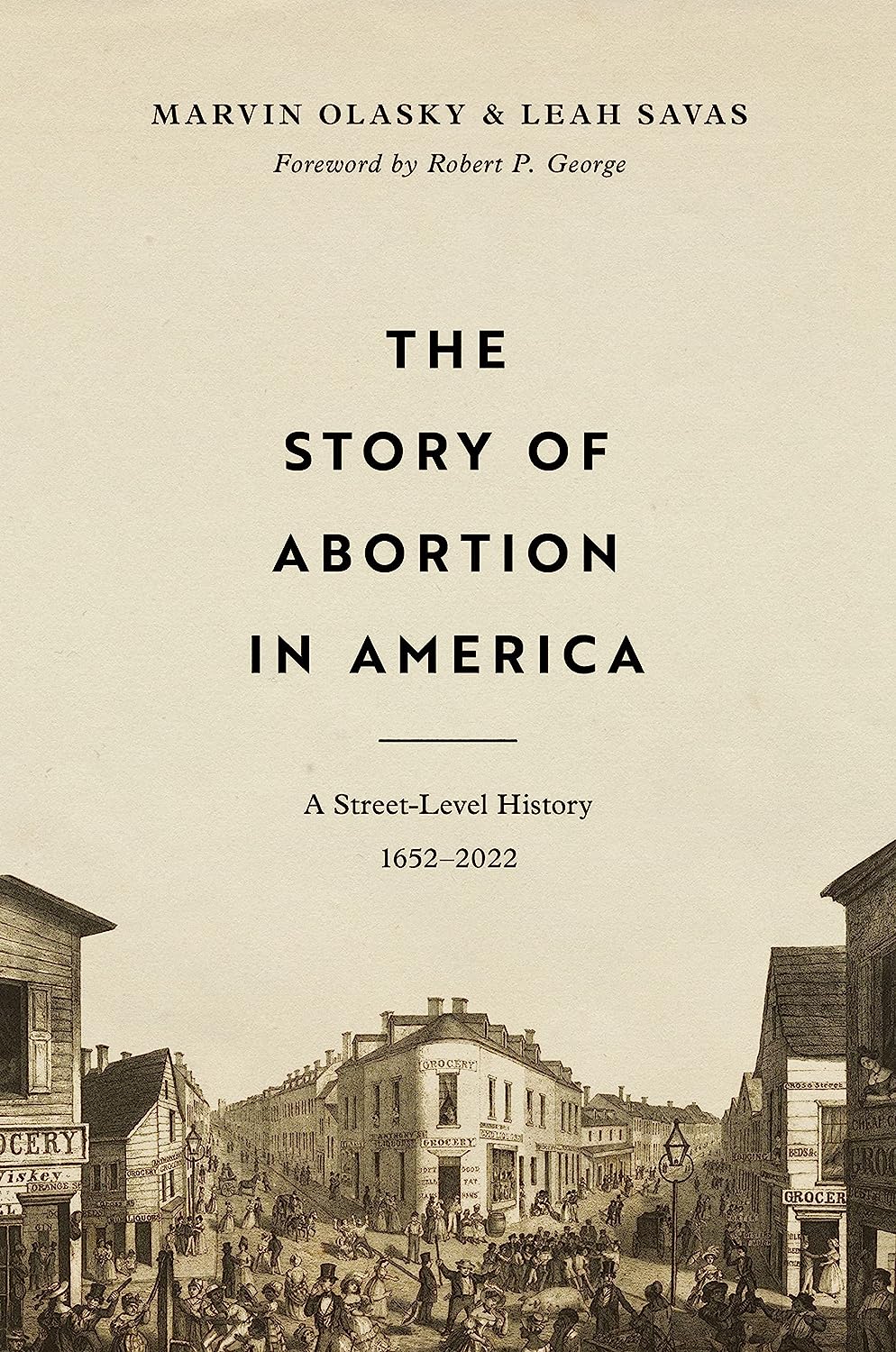One Year after Dobbs, Understanding Abortion History is More Important than Ever
June 24th marked one year since the abortion era of Roe came to an end. In Dobbs v. Jackson Women’s Health, the Supreme Court reversed Roe v. Wade (1973) and Planned Parenthood v. Casey (1992), concluding that the U.S. Constitution does not confer a right to abortion. The consequential decision sent the abortion question back to the states, and over the past year, a patchwork nation of policies has emerged.

Misconception #1: Abortion was accepted prior to quickening in common law tradition.
Justice Harry Blackmun, in writing the Roe v. Wade majority opinion, contends that according to English common law, abortion was not a crime prior to quickening (that is, when the mother can first feel the baby move, typically around 18 weeks or so). Olasky and Savas investigate this claim and find it wanting. Justice Blackmun relied upon “two law journal articles by Cyril Means Jr., who happened to be the top lawyer of the National Association for the Repeal of Abortion Laws” (22). Was there, perchance, any motivating reasoning or selection bias in Means’s “authoritative” articles? Olasky and Savas argue yes, since “Means cited two English cases but left out numerous others that undermined his contention about abortion’s acceptance” and even “the two cases Means cited are not clear-cut” (22).
Then Olasky and Savas present hard evidence from a series of court cases from English and colonial history that show a clear sense of moral disapproval, and in some cases legal consequences, for even pre-quickening abortion. But even beyond the legal digging, Olasky and Savas situate the cases in a broader social context in which the moral intuition and everyday common sense of the people made abortion in large part unthinkable, even before the first flutters of feet are felt in the mother’s womb.
Misconception #2: Coat-hanger and Lysol abortions were common in the 20th century.
Another common ahistorical claim made by abortion proponents is that in the 20th century prior to Roe, women were overwhelmingly driven to back-alley, coat hanger, or Lysol abortions, which led to a high number of deaths. But the actual figures tell a different story. Even in pre-Roe America, the “estimated death rate for illegal abortions in the United States was like that for legal abortions in European countries where abortions took place in antiseptic conditions … which suggests that most U.S. abortions took place in similarly clean environments” (287).
Despite evidence to the contrary, the danger of back-alley abortions remains a staple image for those opposed to limits on abortion. Just as those pushing for abortion rights in the pre-Roe environment exaggerated the maternal danger of abortion in the 1960s, so too do abortion proponents make exaggerated claims in the post-Roe landscape. As one reporter put it, the “image of tens of thousands of women being maimed or killed each year by illegal abortion is so persuasive a piece of propaganda that the movement could be forgiven its failure to double-check the facts” (287). Actually, double-checking the facts is essential, and Olasky and Savas do just that.
Misconception #3: The pro-life cause has been led by religious extremists.
Another common claim from supporters of abortion is that the pro-life movement is radical and led by religious extremists. This argument especially gained steam in the late 1980s and early 1990s when a very small fraction of pro-lifers “turned from non-violence to killing” (328). The media were more than happy to key in on a few male figures who had especially caustic and bombastic personalities and became the whipping boys of the cultural class. Despite there being only a few real instances of violent actions committed by those opposed to abortion, the media lumped all anti-abortion activity together as extremist. The fringe became definitive of the whole, and as a result, “public opinion polls showed increasing support for abortion” at that time (328).
Even though media sources were keen to focus on the fringes, a grassroots movement of compassion and care was emerging. Olasky and Savas explain, “many reporters missed, and others criticized, a growing compassion movement that took root in the 1970s and ‘80s among both Catholics and Protestants. Young women in a crisis, often abandoned by boyfriends and parents, needed a new family of helpers—and groups that became known as crisis pregnancy centers or pregnancy resource centers provided one” (331). Quiet work. Slow work. Mundane work. Loving work. One person at a time. Another point that disproves this third misconception is the fact that there are many non-religious pro-life groups today, including Secular Pro-Life and Feminists for Life.
Investigating Further Misconceptions
For anyone interested in digging deeper into the historical claims, legal arguments, and popular narratives frequently used to support or oppose abortion today, Olasky and Savas prove very able guides. In The Story of Abortion in America, they equip us to navigate our post-Roe world through a captivating and thorough account of the life and thought of everyday people from the 17th century into the 21st. The historical connections to where we find ourselves today are numerous and reveal to us the power and importance of accurately knowing our past.
Related:
- Against All Odds: A Conversation with Erin Hawley about the Undoing of Roe v. Wade, by Bob Perry
- When the Drums Go Silent, by Bob Perry
- Facing Reality, by Bob Perry
is headmaster of All Saints Classical Academy and vicar at All Saints Lutheran Church (LCMS) in Charlotte, NC. He also taught high school history for thirteen years and studied at Messiah College, Reformed Theological Seminary, and Winthrop University. He is author of Education's End and co-author with Robin Phillips of Are We All Cyborgs Now? He also has written for Front Porch Republic, Mere Orthodoxy, Public Discourse, and Touchstone.
• Get SALVO blog posts in your inbox! Copyright © 2026 Salvo | www.salvomag.com https://salvomag.com/post/engaging-the-post-roe-discussion



















